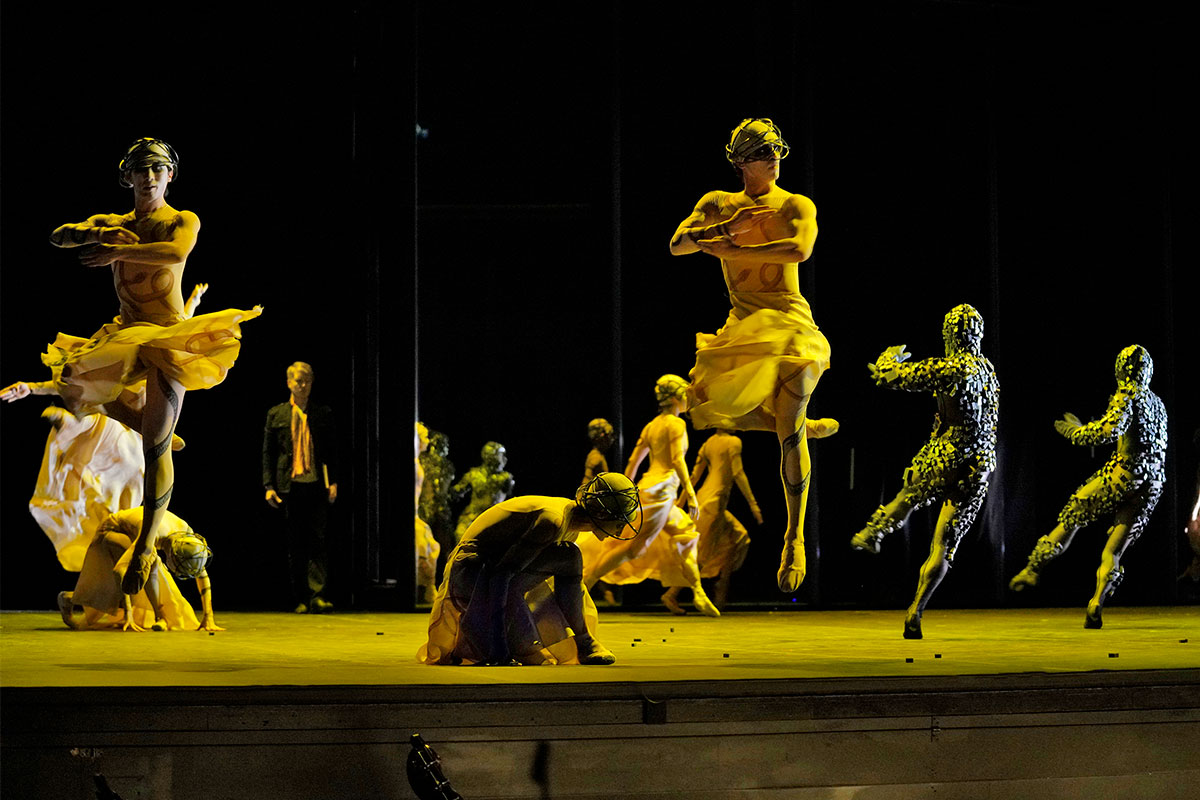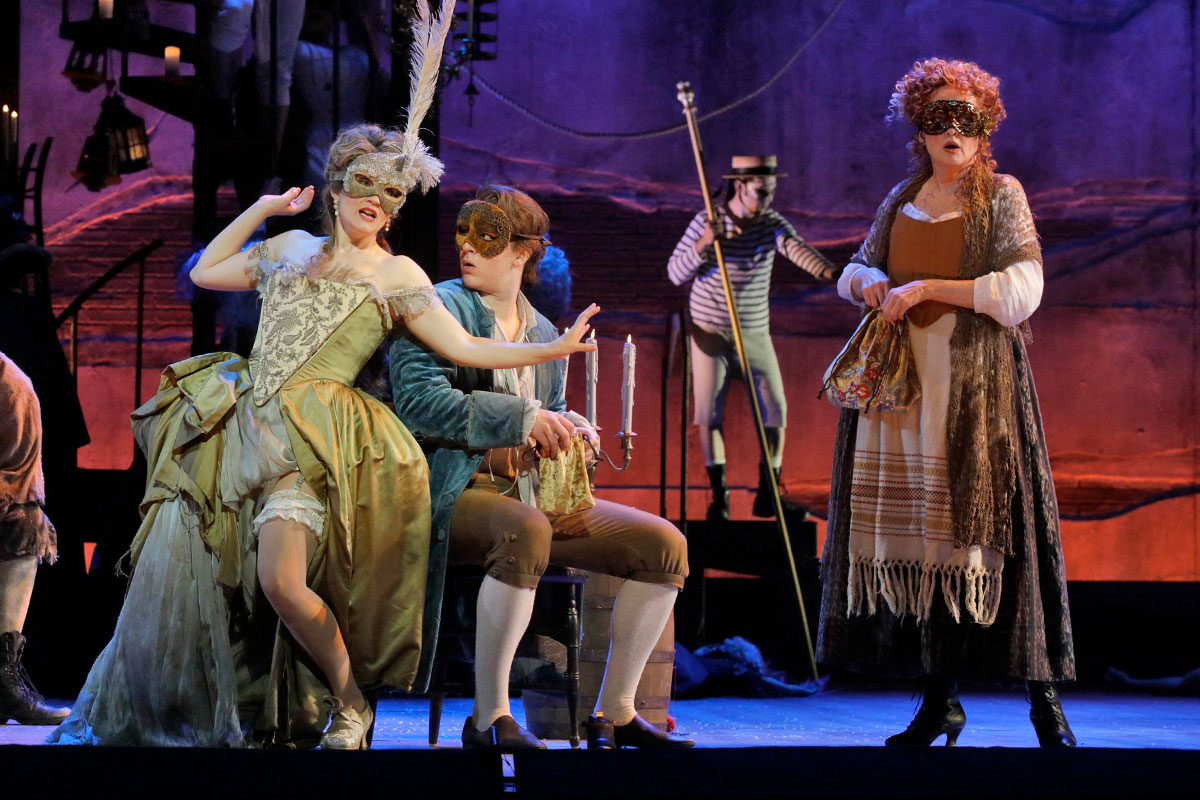In one of the most artistically successful collaborations ever presented at the Dorothy Chandler Pavilion, the L.A. Opera has joined with the Hamburg Ballet’s John Neumeier and the Joffrey Ballet of Chicago to bring Gluck’s ORPHEUS AND EURYDICE to the stage.
Neumeier—who directed, choreographed, and designed the sets, costumes, and lighting—guides his singers and dancers across the dance studio (Orpheus is a choreographer in this production) and through the underworld to mesmerizing effect. Gluck’s 1762 piece was opera’s first Gesamtkunstwerk, and, with its expressive emotional through line, a precursor to the nineteenth-century’s great Romantic scores.
A full company of 43 dancers animates the stage throughout the performance, providing spectacular visual counterpoint to the story of a lost wanderer (Maxim Mironov, in complete command as Orpheus), for whom the concept of love (Liv Redpath, as Amour) is poor compensation for love in the flesh (Lisette Oropresa’s Eurydice).
ORPHEUS AND EURYDICE
Sundays, March 18 and 25, at 2 pm.
Wednesday, March 21, and Saturday, March 24, at 7:30 pm.
DOROTHY CHANDLER PAVILION, Music Center, 135 North Grand Avenue, downtown Los Angeles.
Top: John Neumeier and Lisette Oropresa rehearsing a scene from the L.A. Opera production of Orpheus and Eurydice.
Below: Scenes from the opera at the Dorothy Chandler Pavilion, with Maxim Mironov among the dancers. All photographs by Ken Howard.










